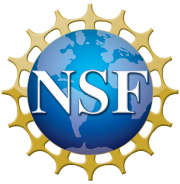Vis-a-thon 2025
Acoustic Forest
Authors
Nico Moody PhD Candidate, Brown University, Ecology, Evolution, and Organismal Biology
COLLABORATOR
Stephanie Van Riet MFA, Rhode Island School of Design, Sculpture stephanievanriet.com Instagram: @steph.vanriet
Critic
Rafael Attias
Acoustic Forest is an interactive sculpture constructed from locally sourced Rhode Island wood. In the foreground, a diverse array of tree and bark pieces are hand-carved with etchings of downy woodpecker acoustic signals. Weaving behind and among the trees are paper feathers, evoking the classic downy woodpecker wing pattern. Together, the components represent many of the ways these charismatic woodpeckers communicate with each other, described in naturalist field notes beside the anchoring log. The audience is invited to join the chorus by picking up a drum stick and creating sound through their own exploration of the various surfaces!
INITIAL PROPOSAL NOTECARDS
"I came into the Vis-a-thon experience with a lot of ideas to visualize my research. The medium and scale of each project I discussed with the critics on day one ranged widely, but a common theme through them all was the ability for the audience to interact with the work. When Stephanie and I first met, we connected over the sense of wonder we feel out in nature. It quickly became clear that neither of us is the kind of person to shy away from a large scale project!"
—Nico
"We decided that wood would be an obvious material choice and set off together to the RI Saw Mill to explore our options. Upon arrival, we were greeted by the scent of various types of wood and the chorus of woodpeckers drumming in the trees above. The wood collection was definitely a defining part of the brainstorming process, helping us generate ideas and consider technical possibilities for the piece. I could sense Nico’s hesitance in focusing on a single piece of wood, so I suggested that we create a “forest” installation, allowing us to play with carving techniques and see what resonated. We collected different types of bark, knots, and longitudinal pieces from the scrap pile, and picked up a few logs as well."
—Stephanie
"For the acoustic signals, we focused on hand-made details, carving the drum, whinny, and pik patterns into the surface of our wall-mounted wood. The visual wing flare signal took a different approach, with paper feathers spread across the wall evoking the classic downy woodpecker plumage pattern. We wanted to encourage the audience to explore and experiment with the different surfaces before reaching the “key” that explains each signal."
—Nico
“When it came to the final review of the Vis-a-thon works, it struck me how often digital technology is used to communicate scientific ideas. Perhaps it is the data input that allows for new visual renderings; however, by keeping our work analog, we were able to simplify the data.”
—Stephanie
FINAL IMAGES
Tools Used in the Project
Rhode Island Wood Woodworking Tools Typewriter
Copyright
© Acoustic Forest, 2025

This material is based upon work supported in part by the National Science Foundation under EPSCoR Cooperative Agreement #OIA-1655221.
Any opinions, findings, and conclusions or recommendations expressed in this material are those of the author(s) and do not necessarily reflect the views of the National Science Foundation.





